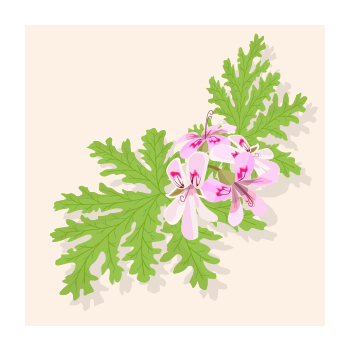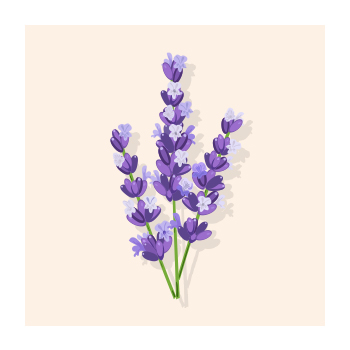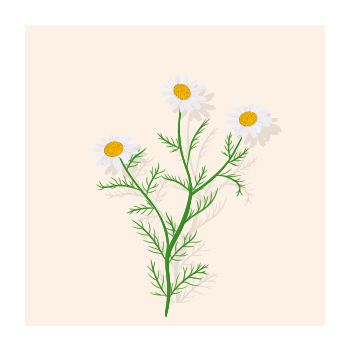


Sign-up for {N}power to get exclusive discounts, newsletters, members-only features, and more!

Have you ever noticed that your sense of smell has the ability to directly take you back to a certain time and place, to unlock memories from childhood, perhaps even more than looking at old photos?1 Did you know that a smell can evoke a feeling of calmness, alertness, and wellbeing? Our olfactory sense is the ability to perceive smells; it is the only sense that is processed in the amygdala and hippocampus located in the temporal lobes of the brain—areas that are most strongly linked to emotions, learning, and memory.2
With this powerful sense, we can use scents directly in the form of aromatherapy to fight anxiety and depression, alleviate sleep disturbances, boost mood, and mitigate memory problems. It’s a safe and pleasant-to-use complementary therapy that’s a no-brainer to address many common health issues, naturally and effectively. Aromatherapy just makes scents for our health!

Aromatherapy is the inhalation of an essential oil (EO) made from the stems, leaves, flowers, roots, and/or fruits of various plants; inhalation can be direct or oils can be added to a diffuser. Essential oils can also be used topically (when mixed with a neutral carrier oil, such as almond oil) through direct contact such as a massage or bathing. And research is continually showing that these oils do far more than just smell good.

Rose geranium is an EO derived from plants in the geranium family and has a scent resembling roses. A randomized clinical trial sought to study the effects of inhaling rose geranium EO in women in labor for the first time, a highly anxious group by default, and found that those in the control group had significantly reduced anxiety scores and a significant decrease in diastolic blood pressure compared to the placebo group. The researchers wrote that rose geranium EO “has anti-inflammatory, antidepressant, sedative, anxiety-reducing, and muscle-relaxing properties.” They concluded, “Aroma of essential oil of geraniums can effectively reduce anxiety during labor and can be recommended as a non-invasive anti-anxiety aid during childbirth.”3
Taking a deeper dive, two main components within geranium EO, citronellol and geraniol, seem to hold the key to their effectiveness. In a study on mice behaviors, researchers found that these two constituents of rose geranium were significantly effective at reducing stress, promoting relaxation, and alleviating a depressed mood compared to the control group.4

Depression and anxiety are often accompanied by high levels of the stress hormone cortisol. Aromatherapy using lavender EO has been observed to downregulate the release of stress hormones and decrease salivary and serum cortisol levels.5 6
Roman chamomile is another helpful EO used in aromatherapy. In a study of patients with Acute Coronary Syndrome (ACS), with a mean age of 58, experiencing high anxiety and at risk for a poor quality of life, results showed chamomile EO significantly lowered anxiety scores, systolic blood pressure (SBP), diastolic blood pressure (DBP), and heart rate compared to the placebo group when it was inhaled before bed for just two consecutive nights.7

Another study—this time on the effects of both lavender and chamomile EOs as inhalation aromatherapy on markers of anxiety, stress and depression in 183 older community-dwelling adults—found that there was a significant improvement after inhaling just three drops of lavender and chamomile EOs continuously for 30 nights compared to the control group.8
Have you ever noticed that nothing quite perks you up like the scent of fresh citrus? Citrus EOs, like sweet orange and bitter orange, have powerful anti-inflammatory and anti-microbial properties and have been shown to have antidepressant, mood-uplifting, and overall emotional-balancing effects.9 10 11 12 In fact, “Citrus EO has been observed to induce a pleasant mood in people suffering from sadness.”13
Additionally, research has found that “Lemon EO has also been recorded to produce antidepressant effects in terms of accelerated turnover of dopamine in the brain hippocampal region establishing therapeutic effects of EOs in healing the patients from depression and related symptoms.”14 What’s more, inhalation of orange EO for 90 seconds has been observed to cause “a significant decrease in oxyhemoglobin concentration in the right prefrontal cortex of the brain which increases comfortable, relaxed, and natural feelings.”15
Bergamot orange is another EO used in aromatherapy as a pain reliever, and to improve sleep disorders, reduce anxiety, and has been reported to prevent negative symptoms of depression. 16
As you probably know, sleep disturbances and restless nights can happen at any point in one’s life, and thankfully we can reach for the power of lavender EO to help get us through. That’s because lavender contains potent compounds that interact with the central nervous system and brain to reduce restlessness and agitation and promote relaxation. It’s also known as a mood stabilizer.17
According to a study conducted on 31 healthy sleepers, ages 18 to 30 years old, researchers found that after three consecutive nights in a sleep lab, the amount of slow- and deep-wave sleep increased in the participants when lavender oil was given as an olfactory stimulus. In addition, all participants reported higher vigor the morning after lavender exposure compared to the control group.18
Research shows that another particular group may also benefit from lavender in a big way—postmenopausal women suffering from insomnia. In one placebo-controlled study, researchers evaluated the effect of lavender EO on quality of life (QOL) and sleep patterns in postmenopausal women with diagnosed insomnia. At the end of the 29-day study, those inhaling lavender nightly before bed as part of the aromatherapy intervention group saw a significant improvement in their overall QOL score, total sleep time, and sleep efficiency.19
Sleep disorders in a hospital setting are also quite common, with more people seeking alternatives to sleeping pills to prevent unwanted side effects. One study evaluated the effect of lavender EO on those hospitalized with heart disease in the ICU. After three nights of aromatherapy with lavender oil, participants showed significant improvement in their sleep quality compared to the non-intervention group.20
When it comes to staying sharp now and well into your later years, there’s one EO leading the pack in terms of providing proven brain-retaining results: rosemary.
In ancient Greece and Rome, rosemary was thought to strengthen memory21 and today, modern research backs this up. In one small study, 20 young healthy adults were randomly assigned to be exposed to diffused rosemary oil for various lengths of time in a small room. It was found that speed and accuracy in cognitive measures increased in direct proportion to the duration the oil was diffused.22 Additional research suggests that inhaling rosemary and other EOs, like lemon, lavender, and orange may improve brain function in older adults with dementia, including those with Alzheimer’s disease (AD).23

Wherever your path to health leads you, make sure that you stop to smell the roses (rose geranium that is), as well as the lavender, the chamomile, the citrus, and the rosemary EOs. It just makes scents to give your health a helping hand with the power of aromatherapy!



Sign-up for {N}power to get exclusive discounts, newsletters, members-only features, and more!